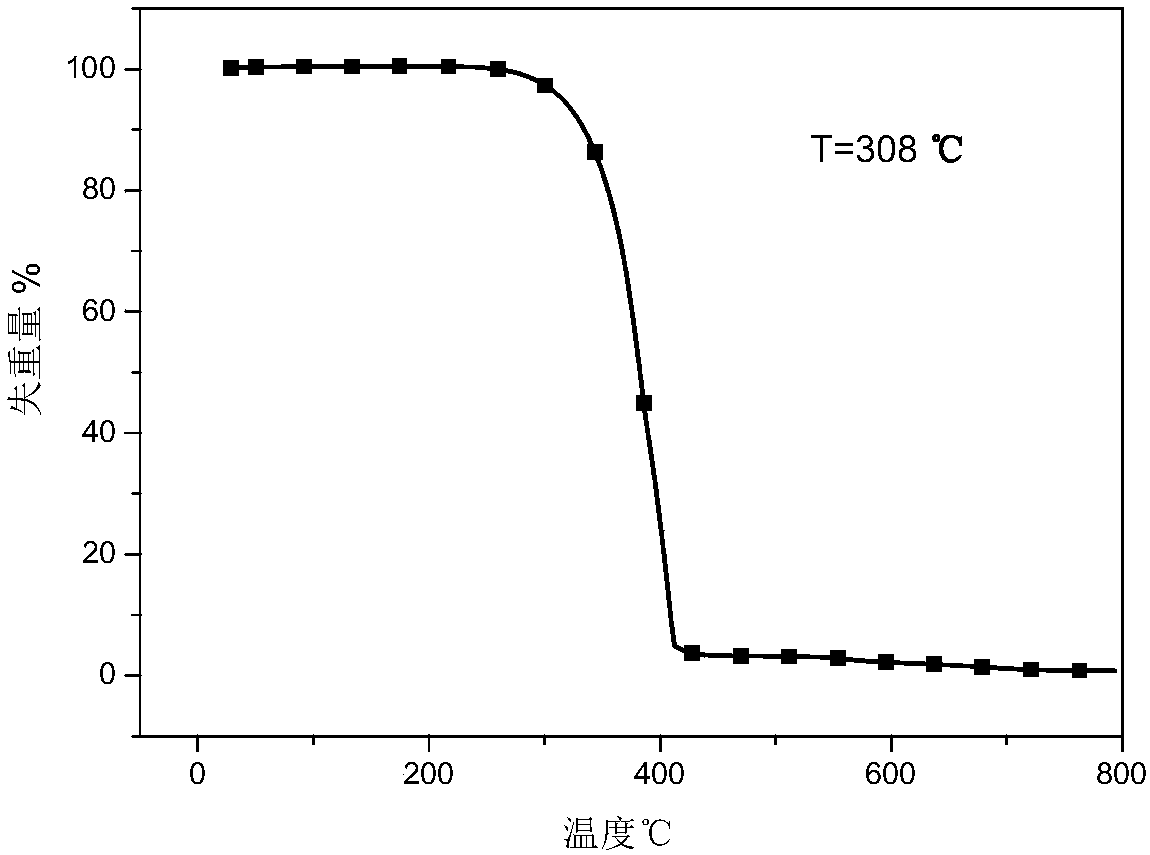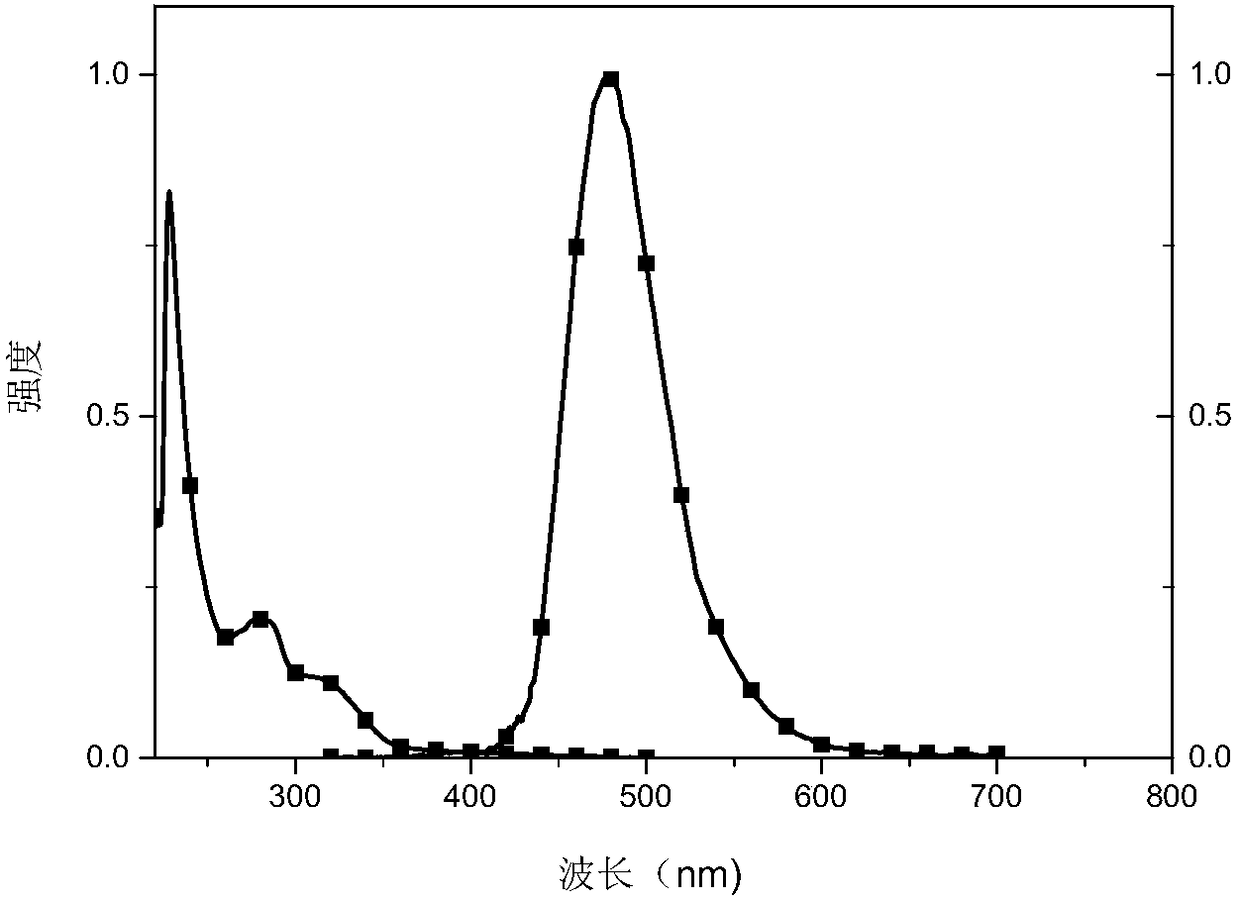Thermally activated delayed fluorescence host material, preparation method and applications thereof
A technology of delayed fluorescence and host material, applied in the fields of luminescent materials, semiconductor/solid-state device manufacturing, electric solid-state devices, etc., can solve the problems of material shortage, low device efficiency and quenching effect
- Summary
- Abstract
- Description
- Claims
- Application Information
AI Technical Summary
Problems solved by technology
Method used
Image
Examples
preparation example Construction
[0058] According to the above-mentioned preparation method, the preparation method comprises the following steps:
[0059] (1) Add 3mmol o-dibromobenzene, 1,2-dibromo-4,5-difluorobenzene, 1,2-dibromo-3,4,5-trifluorobenzene, 2,3-dibromo-1 , 4,5-trifluorobenzene or 1,2-dibromo-3,4,5,6-tetrafluorobenzene was mixed with 10~30mL tetrahydrofuran respectively, stirred at 0~-120℃, and 1~8mmol n- Butyllithium, after reacting for 12-24 hours, add 1-5 mmol of phosphorus trichloride, stir and react for 6-12 hours, and then perform post-treatment to obtain the intermediate;
[0060] (2) Dissolve the intermediate in 10~30mL ether, stir at 0~-120°C, add 1~8mmol of n-butyl lithium dropwise, react for 12~24h, add 1~5mmol of phosphorus trichloride and stir to react 6 ~12h, quench the reaction with water;
[0061] (3) Add hydrogen peroxide and continue the reaction for 2 hours to obtain a crude product, which is recrystallized to obtain compounds having the structures of formula I, formula II,...
Embodiment 1
[0086] Embodiment 1 has the preparation of the TPDPO of formula I structure
[0087] (1) Put 3mmol of o-dibromobenzene and 15ml of tetrahydrofuran in a 50ml three-necked round-bottomed flask that has been baked to remove water, and use a mixture of liquid nitrogen and n-propanol to cool to -120°C and stir. Slowly Add 3.6mmol of n-butyllithium dropwise, after reacting for 20min, slowly add 1mmol of phosphorus trichloride and stir for 12h, quench the reaction with water, extract with dichloromethane, and wash the organic layer with anhydrous Na 2 SO 4 Drying, use a rotary evaporator to spin out the solvent, and the concentrate is purified by column chromatography with a volume ratio of petroleum ether and dichloromethane of 5:1 to obtain the intermediate tris(2-bromophenyl)phosphine;
[0088] (2) Stir 3mmol tris(2-bromophenyl)phosphine and 20ml ether at 0°C, add 3.6mmol n-butyllithium dropwise, react for 1h, add 1mmol phosphorus trichloride and stir for 12h, quench the reacti...
Embodiment 2
[0095] Embodiment 2 has the preparation of the TPDPOF6 of formula II structure
[0096] The experimental procedure is the same as that of Example 1, except that the raw material fluoro-o-dibromobenzene used is 1,2-dibromo-4,5-difluorobenzene, and the obtained intermediate is tris(2-bromo-4,5-difluorobenzene) Fluorophenyl)phosphine; the product is 2,3,7,8,14,15-hexafluoro-5,10-[1,2]-phenylphosphine-5,10-dioxide, and the product is marked as TPDPOF6.
[0097] The intermediate structural formula prepared in embodiment 2 is:
[0098]
[0099] The compound TPDPOF6 structural formula that embodiment 2 prepares is:
[0100]
[0101] The data measured by the mass spectrometer of TPDPOF6 are: m / z: 429.97 (100.0%), 430.98 (19.6%), 431.98 (2.2%) Elemental Analysis: C, 50.26; H, 1.41; F, 26.50; O, 7.44; P ,14.40.
PUM
| Property | Measurement | Unit |
|---|---|---|
| Thickness | aaaaa | aaaaa |
| Thickness | aaaaa | aaaaa |
| Thickness | aaaaa | aaaaa |
Abstract
Description
Claims
Application Information
 Login to View More
Login to View More - R&D
- Intellectual Property
- Life Sciences
- Materials
- Tech Scout
- Unparalleled Data Quality
- Higher Quality Content
- 60% Fewer Hallucinations
Browse by: Latest US Patents, China's latest patents, Technical Efficacy Thesaurus, Application Domain, Technology Topic, Popular Technical Reports.
© 2025 PatSnap. All rights reserved.Legal|Privacy policy|Modern Slavery Act Transparency Statement|Sitemap|About US| Contact US: help@patsnap.com



